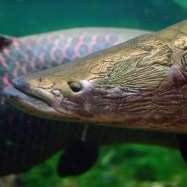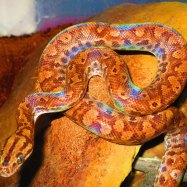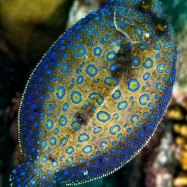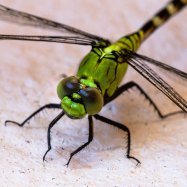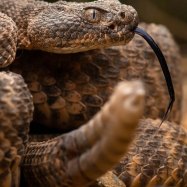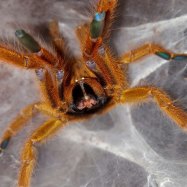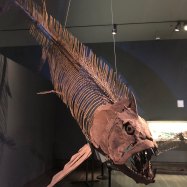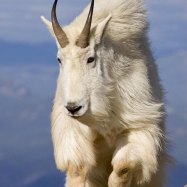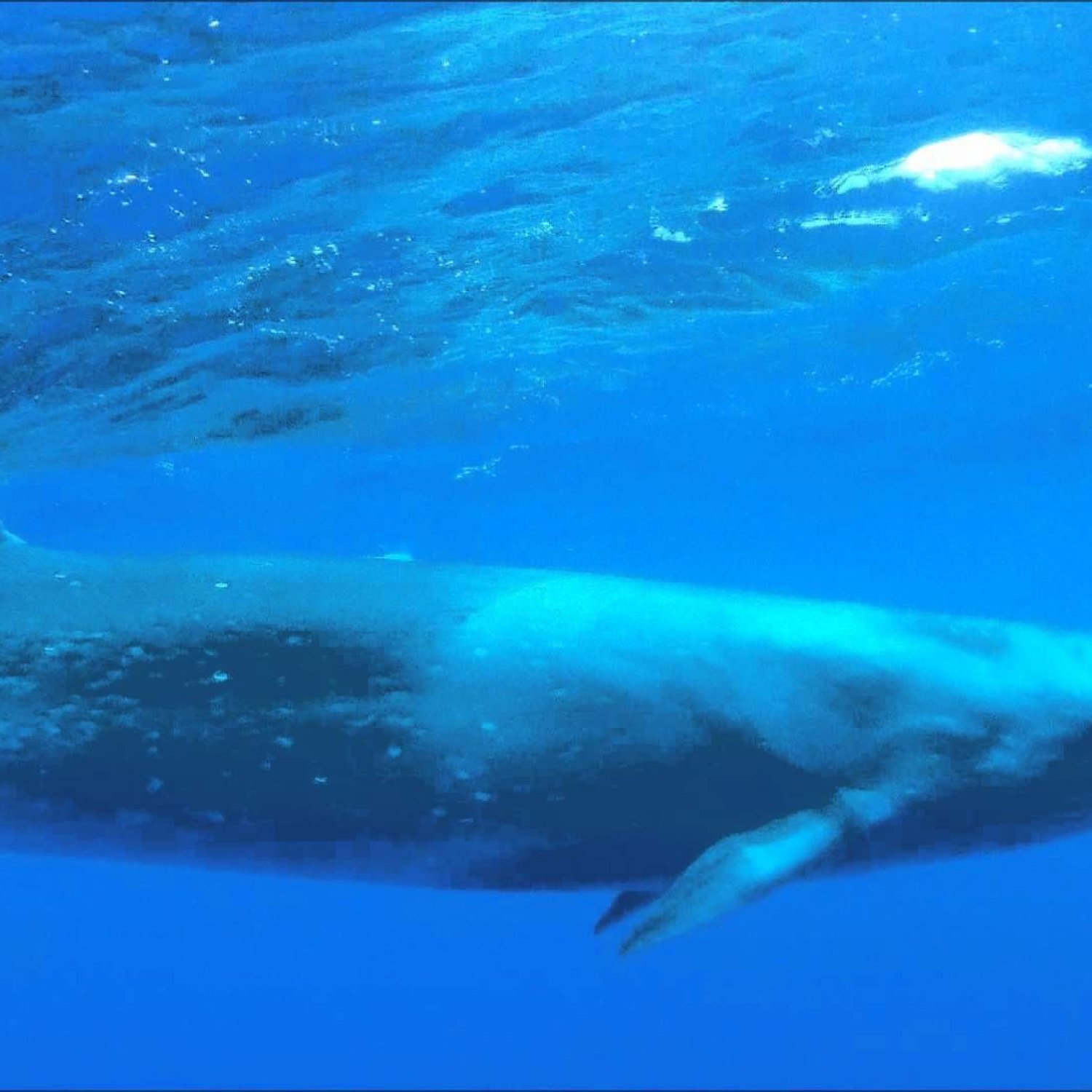
Sei Whale
50-60 feet
The Sei Whale, a majestic creature found in open oceans, belongs to the Balaenopteridae family. Reaching up to 50-60 feet in length, their slender and streamlined body shape allows them to swim through the waters with grace and speed. Despite their size, these gentle giants primarily feed on small fish and krill. #SeiWhale #Balaenopteridae #OpenOceans #GentleGiants
Animal Details Summary:
Common Name: Sei Whale
Kingdom: Animalia
Habitat: Marine
The Mighty Sei Whale: The Third Largest Animal on Earth
Deep in the vast and mysterious expanses of the oceans lie creatures that continue to fascinate and mystify us. Some of these elusive creatures, like the Sei whale, are so massive that it's hard to believe they exist. With their impressive size and unique characteristics, the Sei whale has captured the attention and curiosity of humans for centuries. In this article, we will explore the fascinating world of the mighty Sei whale, from its scientific name to its mesmerizing feeding methods, and everything in between Sei Whale.A Whale of a Name
Scientifically known as Balaenoptera borealis, the Sei whale is a member of the Baleen whale family, Balaenopteridae, which includes other large whale species such as the Blue whale and the Fin whale. The name "Sei" comes from the Norwegian word "seje," meaning "pollock" or "coalfish." It was likely given this name because of its preferred prey of small schooling fish.In addition to its scientific name, the Sei whale is also commonly known as the Sardine whale, Rudolphi's rorqual, and the Pollack whale. These names reflect its large size and its association with the abundant presence of small fish in its habitat.
Kingdom: Animalia
The Sei whale belongs to the kingdom Animalia, which encompasses all animals. As such, this magnificent creature shares many characteristics with other animals, including being multicellular, heterotrophic, and having specialized cells and tissues.Phylum: Chordata
Belonging to the phylum Chordata, Sei whales share many anatomical features with other members of this group, including having a notochord (a flexible rod-like structure) during their early development. Eventually, this structure is replaced by a backbone, which gives the animal its characteristic vertebral column Senegal Parrot.Class: Mammalia
As a member of the class Mammalia, Sei whales share many traits with other mammals, including having mammary glands, giving birth to live young, and being warm-blooded. In addition, Sei whales have a thick layer of blubber that helps them regulate their body temperature and provide energy during migration.Order: Cetacea
The order Cetacea includes all whales, dolphins, and porpoises. As a member of this order, Sei whales have evolved to live exclusively in the water, with adaptations such as flippers and a streamlined body to help them swim efficiently.Family: Balaenopteridae
The Sei whale is a member of the Balaenopteridae family, which includes other large whale species. This family is known for their baleen plates, which are used to filter small prey from large volumes of seawater. Sei whales, like other baleen whales, are also known for their impressive migration patterns and their songs.A Habitat Fit for a Giant
Sei whales are found in marine habitats worldwide, making them one of the most widely distributed whale species. They prefer areas with cooler water temperatures, and they are often seen in the open ocean. Due to their migratory nature, they are known to travel long distances, often crossing entire oceans in search of food.In warmer months, Sei whales are found in polar and subpolar waters, feeding on krill and small schooling fish such as sardines and anchovies. In colder months, they move to lower latitudes, where food is more abundant and the water is relatively warm. This migratory pattern also allows the Sei whale's habitat to shift and adapt to changing environmental conditions, making them versatile and resilient animals.
Feeding Method: Filter Feeder
Sei whales are filter feeders, using their baleen plates to filter and consume thousands of kilograms of small prey each day. Unlike toothed whales that hunt and kill their prey, baleen whales like the Sei whale rely on a process called filter feeding. This process involves taking in a large volume of water while keeping their mouth open. They then use their tongue to push the water out, trapping prey such as fish, krill, and plankton in their baleen plates. They then swallow the prey and expel the excess water, repeating the process many times a day.Newborn Sei whales are not born with baleen plates and must learn the proper filtering technique from their mothers. This skill is crucial for their survival, as they need to consume large amounts of food to reach their impressive size.
A Global Presence
Sei whales can be found in various countries around the world, including Norway, Iceland, Japan, Russia, Canada, and the United States. Due to their extensive range, they are highly valued by many cultures for their meat, oil, and various other products. However, due to overhunting in the past, Sei whales are now protected under international regulations that prohibit their commercial hunting.A Colorful Creature
Sei whales are characterized by their dark bluish-gray coloration, which helps them camouflage in their marine habitat. This coloration also makes them difficult to spot from above, making them elusive and mysterious creatures. Their underside is usually lighter in color, ranging from white to a light gray.A Body Unlike Any Other
One of the most striking features of the Sei whale is its body shape. Unlike other baleen whales, the Sei whale has a slender and streamlined body, with a pointed head and a small dorsal fin. This unique body shape allows them to travel quickly through the water, making them efficient hunters and agile swimmers.The Third Largest Animal on Earth
Measuring between 50-60 feet in length and weighing between 45-60 tons, Sei whales are the third largest animal on Earth, following the Blue whale and the Fin whale. To put this into perspective, that is longer than three fully grown elephants lined up end-to-end. And with their massive size comes immense strength, allowing them to travel vast distances and migrate thousands of miles each year.Threats and Conservation Efforts
Like many other marine species, Sei whales face various threats to their survival, including changes in their ocean habitat, pollution, and entanglement in fishing gear. In the past, they were also heavily hunted for their valuable oil and meat. However, due to international protection measures, their population has been slowly recovering.Efforts are also being made to reduce other threats to Sei whales, such as restricting fishing gear in their habitats and creating marine protected areas. Additionally, ongoing research and monitoring of Sei whale populations and their habitats are essential for the continued conservation of this magnificent species.
In Conclusion
In the vast world of the oceans, the Sei whale stands as a true testament to the power and diversity of the animal kingdom. From its scientific classification to its unique feeding methods and impressive size, it is truly a wondrous creature.We must continue to learn from and protect these fascinating creatures, as they play an essential role in maintaining the delicate balance of our oceans. With ongoing conservation efforts and a growing understanding of their behaviors and habitats, we can ensure that the mighty Sei whale continues to thrive in the vast and mysterious depths of our oceans.

Sei Whale
Animal Details Sei Whale - Scientific Name: Balaenoptera borealis
- Category: Animals S
- Scientific Name: Balaenoptera borealis
- Common Name: Sei Whale
- Kingdom: Animalia
- Phylum: Chordata
- Class: Mammalia
- Order: Cetacea
- Family: Balaenopteridae
- Habitat: Marine
- Feeding Method: Filter Feeder
- Geographical Distribution: Worldwide
- Country of Origin: Various countries
- Location: Open oceans
- Animal Coloration: Dark bluish-gray
- Body Shape: Slender and streamlined
- Length: 50-60 feet
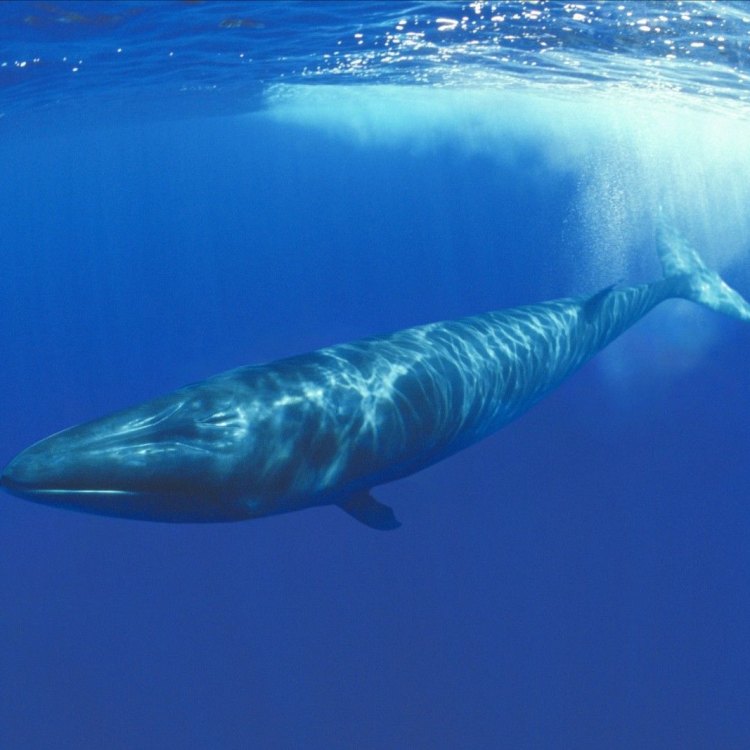
Sei Whale
- Adult Size: Large
- Average Lifespan: 50-70 years
- Reproduction: Sexual
- Reproductive Behavior: Polygynous
- Sound or Call: Loud, low-frequency vocalizations
- Migration Pattern: Long-distance migration
- Social Groups: Solitary or small groups
- Behavior: Energetic and fast swimmers
- Threats: Whaling, ship strikes, entanglement in fishing gear, habitat degradation
- Conservation Status: Endangered
- Impact on Ecosystem: As filter feeders, they play a role in regulating the populations of their prey species
- Human Use: Historically hunted for their blubber and oil
- Distinctive Features: Large size, long and slender body, prominent dorsal fin
- Interesting Facts: Sei Whales are known for their fast swimming speed and acrobatic behavior
- Predator: Killer Whale
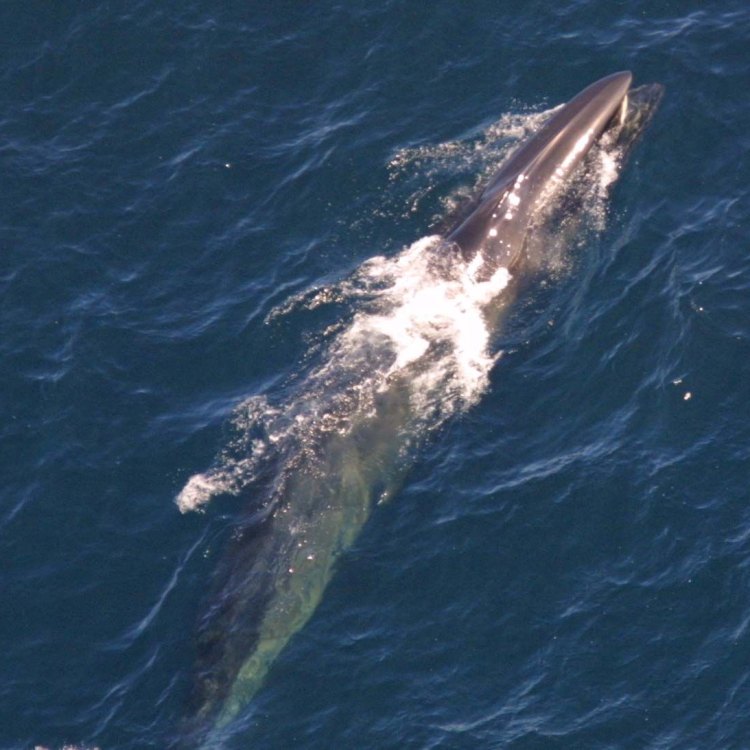
Balaenoptera borealis
The Majestic Sei Whale: A Giant of the Seas
The ocean is vast and unknown, housing creatures of all shapes and sizes. Among the giants of the sea, the Sei Whale stands out with its impressive size, unique features, and intriguing behaviors. From its reproductive habits to its massive body, this whale's presence in the ocean is one to be studied and admired. In this article, we will delve into the world of the incredible Sei Whale and discover all that makes it a true marvel of the marine world PeaceOfAnimals.Com.Adult Size: Large and In Charge
One of the defining characteristics of the Sei Whale is its sheer size. As one of the largest whale species, it can reach lengths of up to 60 feet and weigh up to 100,000 pounds. That's about the size of four elephants stacked on top of each other! Their impressive size is a result of their diet, which mainly consists of small fish, crustaceans, and plankton. To sustain their massive bodies, these whales need to consume large amounts of food, which they do by diving deep into the ocean depths.
Average Lifespan: 50-70 Years of Adventures
Despite their large size, Sei Whales have a relatively long lifespan of 50-70 years. This is quite impressive, considering their size and the potential threats they face in the wild. Like many other whale species, Sei Whales reach maturity at around 6 to 12 years of age. However, their lifespan is still affected by various factors such as environmental threats, diseases, and human activities.
Reproduction: An Acrobatic Courtship
Sei Whales have a sexual reproduction system, which means that they require a male and female to mate and produce offspring Shollie. However, what's unique about these whales is their polygynous mating behavior. This means that a male Sei Whale will have multiple female partners during breeding season. The breeding season typically occurs during the winter months when the whales migrate to warmer waters.
To attract females, the male Sei Whale will perform impressive acrobatic displays, such as breaching and slapping its pectoral fins against the surface of the water. These displays not only attract the attention of female whales but also demonstrate the male's strength and agility, making him a desirable mate.
Sound or Call: A Loud and Low-Frequency Voice
Whales are known for their vocalizations, and Sei Whales are no exception. They produce loud, low-frequency vocalizations, which can be heard up to 12 miles away. These vocalizations serve different purposes, such as communication between individuals, navigation, and possibly even mating. Scientists are still studying and decoding these vocalizations to understand their meanings fully.
Migration Pattern: A Long-Distance Journey
The Sei Whale's migration pattern is quite impressive as they travel long distances between their feeding and breeding grounds. These whales are known to migrate from the polar regions in the summer to warmer waters during the winter months. For example, they can travel from the Arctic to the Gulf of Mexico during migration, covering thousands of miles. This journey is vital for their survival as it allows them to find food, mate, and give birth in more conducive environments.
Social Groups: Solitary or Small Groups
Unlike other species of whales that travel in large pods, Sei Whales are mainly solitary or travel in small groups of up to three individuals. This could be due to their large size, making it challenging to coordinate and travel as a large group. However, they may sometimes gather in larger groups during their migration to warmer waters or when feeding on rich food sources.
Behavior: Energetic and Fast Swimmers
Being the third-largest species of whale, the Sei Whale is an energetic and fast swimmer. They can reach speeds of up to 34 miles per hour, making them one of the fastest marine mammals. This speed is essential for their survival as it enables them to capture their prey efficiently. And that's not all - these giants of the sea are also known for their acrobatic behavior, often breaching and slapping their fins and tails on the water's surface.
Threats: Struggling Against Human Activities
Despite their impressive size, Sei Whales are under threat from various human activities. Historically, they were hunted for their blubber and oil, which was used in industries such as cosmetics and lighting. While whaling has now been banned in many countries, they continue to face threats from ship strikes, entanglement in fishing gear, and habitat degradation. These threats have contributed to their current status as an endangered species.
Conservation Status: An Endangered Giant
The International Union for Conservation of Nature (IUCN) classifies the Sei Whale as an endangered species. This means that they are facing a high risk of extinction in the wild. Despite the ban on whaling, they continue to face a myriad of threats, leading to a decline in their populations. Conservation efforts, such as monitoring and reducing the risk of entanglement, are crucial to preserving these magnificent creatures for future generations.
Impact on Ecosystem: The Filter Feeders
As with other whale species, Sei Whales play a vital role in regulating the populations of their prey species. As filter feeders, they consume large quantities of small organisms, such as plankton and fish, helping to balance their populations. This is crucial for maintaining a healthy and diverse marine ecosystem.
Human Use: A History of Whaling
Sei Whales have a long history of human use, particularly in the whaling industry. Their blubber and oil were highly coveted for their various applications, leading to severe depletion of their populations. Today, they are no longer hunted commercially, but their products from past whaling activities are still in demand.
Distinctive Features: Large Size, Slender Body, and Prominent Dorsal Fin
Sei Whales have several unique physical features that make them stand out in the ocean. Their large size, long and slender bodies, and prominent dorsal fin are some of the physical traits that distinguish them from other whale species. They also have a sleek, dark grey or black color, with a white patch on their belly, making them quite striking to behold.
Interesting Facts: Fast Swimmers and Acrobatic Behaviors
Sei Whales are not only known for their enormous size, but also for their incredible swimming speed and acrobatic behaviors. Their speed allows them to hunt efficiently, while their acrobatic displays are a sight to behold. They are also one of the few whale species that can leap completely out of the water, making them a favorite among whale watchers and researchers alike.
Predator: The Killer Whale
Despite their impressive size, Sei Whales do have a natural predator - the Killer Whale, also known as the Orcas. While not a significant threat, Killer Whales may prey on Sei Whales, particularly calves or sick individuals. However, their main threats come from human activities, as previously mentioned.
In conclusion, the Sei Whale is an astonishing creature, full of unique features, behaviors, and abilities. Their role in regulating their prey populations and their importance in the marine ecosystem cannot be overstated. As they continue to face various threats, conservation efforts and responsible human practices are crucial to ensure their survival and the preservation of our oceans' biodiversity. Let us admire these impressive giants of the sea and work towards safeguarding their future.
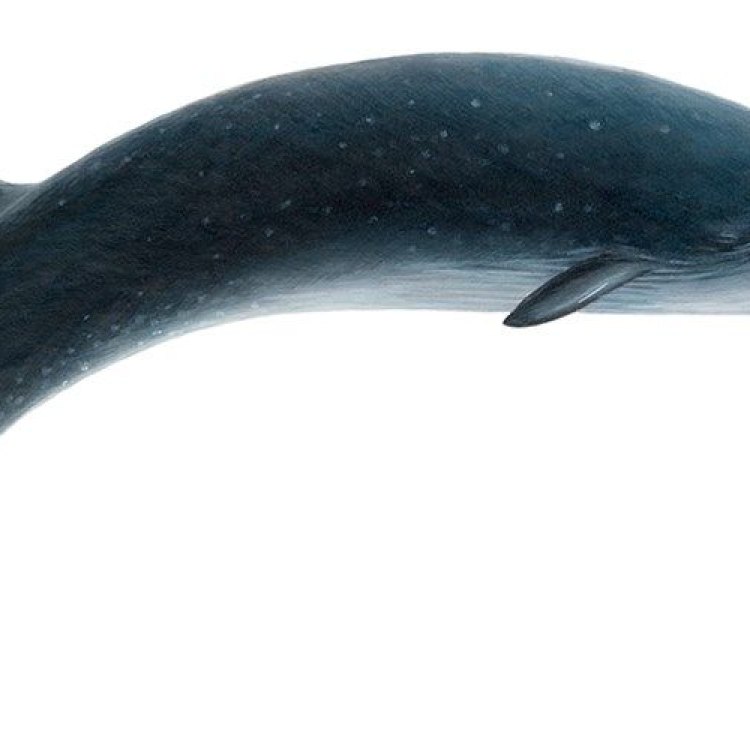
The Mighty Sei Whale: The Third Largest Animal on Earth
Disclaimer: The content provided is for informational purposes only. We cannot guarantee the accuracy of the information on this page 100%. All information provided here may change without prior notice.

